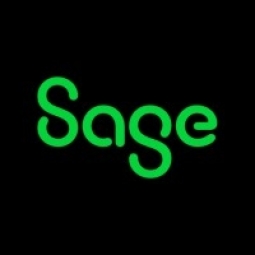公司规模
SME
地区
- America
国家
- United States
产品
- Sage 100 ERP
技术栈
- Windows-based system
实施规模
- Enterprise-wide Deployment
影响指标
- Productivity Improvements
- Customer Satisfaction
技术
- 功能应用 - 企业资源规划系统 (ERP)
适用行业
- 零售
适用功能
- 销售与市场营销
- 商业运营
用例
- 供应链可见性(SCV)
- 库存管理
服务
- 系统集成
关于客户
Smart Inventions, Inc. 是一家专门从事直接响应电视的公司。该公司总部位于加利福尼亚州派拉蒙,拥有一个办公地点。公司拥有 80 名员工。Smart Inventions 因一款名为 Smart Mops 的产品的获奖电视广告而大获成功。该公司由 Jon Nokes 和 Thomas Persson 创立,他们看到了 Smart Mop 的潜力,这是一款简单的手持式清洁产品,只需轻轻一抹就可以清除任何类型的溢出物,而无需将手弄湿。该公司还有其他几款产品,例如 Smart Wipes、Smart Nails 和 Lazer Mouse。
挑战
Smart Inventions 是一家销售家用清洁产品的公司,其过时的 Novell 系统面临着挑战。基于 DOS 的网络正在丢失数据,限制同时使用的用户数量,并且无法轻松扩展以处理公司正在处理的订单量。该公司每天处理多达 4,000 个订单,系统无法满足需求。此外,该公司有五个不同的部门,每个部门都有不同的佣金、定价和版税,这增加了情况的复杂性。
解决方案
Smart Inventions 决定实施 Sage 100 ERP,这是一个基于 Windows 的系统,拥有公司所需的所有模块,包括信用卡管理、条形码和订单扫描。该系统安装在公司的所有五个部门:邮购、零售、批发、出口以及展览和展销会。Sage 100 ERP 现在跟踪订购过程的每个方面。该系统一次性导入数千份订单,大约需要两分钟。然后自动为订单开具发票,创建采购订单,并准备产品发货。所有模块都相互关联,客户可以随时致电获取有关采购当前下落的最新报告。
运营影响
数量效益

Case Study missing?
Start adding your own!
Register with your work email and create a new case study profile for your business.
相关案例.

Case Study
Improving Production Line Efficiency with Ethernet Micro RTU Controller
Moxa was asked to provide a connectivity solution for one of the world's leading cosmetics companies. This multinational corporation, with retail presence in 130 countries, 23 global braches, and over 66,000 employees, sought to improve the efficiency of their production process by migrating from manual monitoring to an automatic productivity monitoring system. The production line was being monitored by ABB Real-TPI, a factory information system that offers data collection and analysis to improve plant efficiency. Due to software limitations, the customer needed an OPC server and a corresponding I/O solution to collect data from additional sensor devices for the Real-TPI system. The goal is to enable the factory information system to more thoroughly collect data from every corner of the production line. This will improve its ability to measure Overall Equipment Effectiveness (OEE) and translate into increased production efficiencies. System Requirements • Instant status updates while still consuming minimal bandwidth to relieve strain on limited factory networks • Interoperable with ABB Real-TPI • Small form factor appropriate for deployment where space is scarce • Remote software management and configuration to simplify operations

Case Study
Digital Retail Security Solutions
Sennco wanted to help its retail customers increase sales and profits by developing an innovative alarm system as opposed to conventional connected alarms that are permanently tethered to display products. These traditional security systems were cumbersome and intrusive to the customer shopping experience. Additionally, they provided no useful data or analytics.

Case Study
How Sirqul’s IoT Platform is Crafting Carrefour’s New In-Store Experiences
Carrefour Taiwan’s goal is to be completely digital by end of 2018. Out-dated manual methods for analysis and assumptions limited Carrefour’s ability to change the customer experience and were void of real-time decision-making capabilities. Rather than relying solely on sales data, assumptions, and disparate systems, Carrefour Taiwan’s CEO led an initiative to find a connected IoT solution that could give the team the ability to make real-time changes and more informed decisions. Prior to implementing, Carrefour struggled to address their conversion rates and did not have the proper insights into the customer decision-making process nor how to make an immediate impact without losing customer confidence.

Case Study
Ensures Cold Milk in Your Supermarket
As of 2014, AK-Centralen has over 1,500 Danish supermarkets equipped, and utilizes 16 operators, and is open 24 hours a day, 365 days a year. AK-Centralen needed the ability to monitor the cooling alarms from around the country, 24 hours a day, 365 days a year. Each and every time the door to a milk cooler or a freezer does not close properly, an alarm goes off on a computer screen in a control building in southwestern Odense. This type of alarm will go off approximately 140,000 times per year, equating to roughly 400 alarms in a 24-hour period. Should an alarm go off, then there is only a limited amount of time to act before dairy products or frozen pizza must be disposed of, and this type of waste can quickly start to cost a supermarket a great deal of money.

Case Study
Supermarket Energy Savings
The client had previously deployed a one-meter-per-store monitoring program. Given the manner in which energy consumption changes with external temperature, hour of the day, day of week and month of year, a single meter solution lacked the ability to detect the difference between a true problem and a changing store environment. Most importantly, a single meter solution could never identify root cause of energy consumption changes. This approach never reduced the number of truck-rolls or man-hours required to find and resolve issues.








